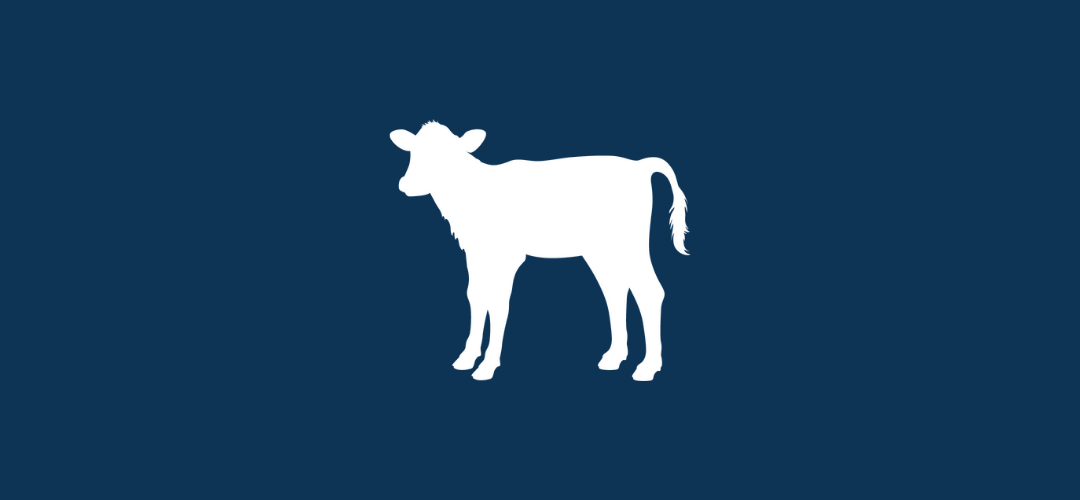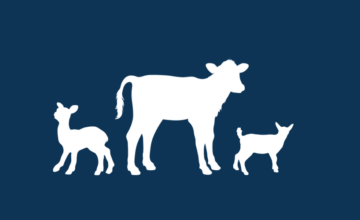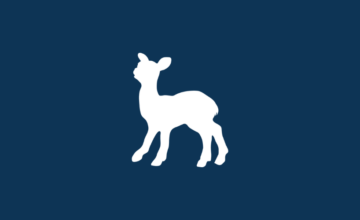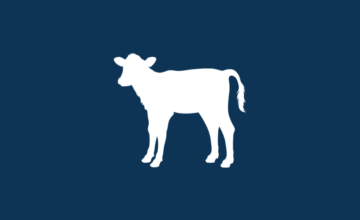Nipple vs. Pail Feeding – Is one better than the other?
- Apr 11, 2022
- By Grober Nutrition
- In Canada
Let’s go back to the basics – Mother Nature. Have you ever taken a moment to analyze the body position of a calf when it is suckling from the dam? The neck is fully extended, slanted downwards from the shoulders and the head is tilted upward but the nose is not elevated above the eyes. This is a natural suckling position for a calf and helps to promote esophageal groove closure, allowing milk to flow into the abomasum.
Natural drinking position for the calf
Research has determined that when calves suckled milk through a nipple, only 2.2% of milk entered the rumen, compared to over 50% when drinking from an open pail. Slowing the rate of ingestion will allow for proper closure of the esophageal groove. Calves drinking from an open pail will have a relaxed neck, head tilted downwards and the esophageal groove will be slower to close, resulting in milk traveling to the rumen. Additional stimuli such as the chemical composition of milk or anticipation of a milk meal also affects groove closure.
Drinking from an open pail can lead to “ruminal drinking”. This is where milk enters the rumen and undergoes fermentation. Calves may develop reduced milk and starter intake, slowed growth, and have clay-like manure. The overall appearance is commonly referred to as “hay belly”. To prevent ruminal drinking, slow down the drinking process, offer multiple small feedings, use a nipple, and minimize stress.
Nipple feeding slows down consumption
Slowing down the consumption rate with nipple feeding not only promotes effective groove closure but it also enhances saliva production. Lipases (enzymes for fat digestion) are present in calf saliva, and start the process of fat digestion within minutes of a meal. The release of other digestive enzymes are stimulated by suckling. Moreover, by extending the time of the milk meal, the suckle reflex is satisfied, lending to reduced non-nutritive oral behaviours (suckling pen bars, other calves, etc.), an indicator of compromised welfare.
So, do the pros outweigh the cons for nipple vs. pail feeding?
Nipple feeding
Pros:
- Nipple feeding promotes consistent closure of the esophageal groove,
- Increases saliva production,
- Satisfies the suckling reflex and is the most natural option
Cons:
- Volume per feeding is limited with bottles
- Bottles are more difficult to clean
- Can be more labour intensive
Pail feeding:
Pros:
- Pail feeding is convenient
- Can feed an increased volume of milk
Cons:
- It is unnatural for the calf,
- There is variability in esophageal groove closure, leading to ruminal drinking, thus negatively effecting rumen development
What would a calf say? Drink from a teat, it can’t be beat!
If feeding with a pail is preferred, consider a nipple pail. Or, if calves are group housed, purchase a milk bar with teats and individual compartments so that intakes can be monitored and consistent meal sizes achieved. With this approach, special attention must be paid to group dynamics to prevent competition at the milk bar feeder. If using bottle holders, the bottle should be tipped at a 30° angle and the calf’s head should be horizontal (eyes level with nose). The average height to place pails is 20-24” from the top of the pail to the bedding surface. Lastly, do not cut a hole in the nipples. If the opening is too large, milk will flow faster, but at the risk of aspiration which can lead to bacterial pneumonia.















